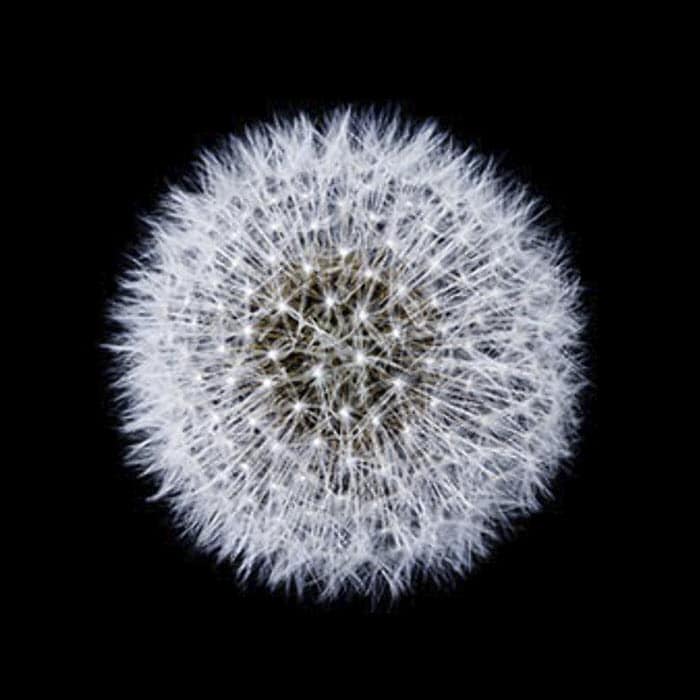Texas Comptroller ruling—Taxpayer found to not qualify for reduced Texas franchise tax rate has been saved

Analysis
Texas Comptroller ruling—Taxpayer found to not qualify for reduced Texas franchise tax rate
Multistate Tax alert | November 5, 2018
In this tax alert, we summarize the Comptroller’s decision as well as offer some taxpayer considerations.
Explore content
- Overview
- Background
- Comptroller’s interpretation of qualification for reduced rate
- Administrative Law Judge’s (ALJ) decision
- ALJ’s decision
Overview
On June 18, 2018, the Texas Comptroller of Public Accounts (Comptroller) released a ruling addressing whether an electronics designer and marketer (taxpayer) was eligible for the reduced tax rate reserved for taxable entities primarily engaged in retail or wholesale trade (reduced rate) for purposes of the Texas franchise tax (commonly referred to as the Texas margin tax) under Texas Tax Code (TTC) § 171.002(b).1 The ruling also addressed potential grounds for an alternative apportionment method under TTC § 171.103 based on sales shipped by a taxpayer to a third party authorized seller’s (Company A) distribution center in Texas.
As described in more detail below, the Comptroller ultimately determined taxpayer’s hardware and software design constituted producing or manufacturing a product under TTC § 171.002(c)(2), which disqualified the taxpayer from using the reduced rate.2 The Comptroller also found the sourcing under title 34 Tex. Admin. Code 3.351(e)(29)(G) (Rule 3.351) as a result of the shipments to Company A’s Texas distribution center did not create unconstitutional distortion; further, there was no authority for a taxpayer to use alternative apportionment methods.
Background
Taxpayer and its wholly-owned subsidiaries designed, marketed, and sold various electronic products, along with related software, services, peripherals, and networking solutions.3 Taxpayer sold its products worldwide through its online and physical stores.4 For report years 2008, 2009, 2010, and 2011 (collectively, report years), the taxpayer did not own any facilities for assembling hardware or manufacturing hardware components other than a single factory responsible solely for producing products for the European market, which constituted approximately 9 percent of taxpayer’s worldwide revenue.5 Outside of this factory, taxpayer’s hardware was assembled and produced by unaffiliated third-party Original Equipment Manufacturers (OEMs).6
Taxpayer designed the hardware for its products, then sent the specifications to OEMs to produce the products.7 The OEMs ordered the components from other third-party vendors, assembled and tested the hardware, and packaged and shipped the products.8 The OEMs’ final stage before packaging and shipping the products was loading software designed by taxpayer onto the products. The software, copyrighted or patented by the taxpayer, was not altered or modified by the OEMs.9 Taxpayer had no further contact with the binary code once copied by the OEMs and loaded onto the products.10
During the report years, Company A purchased taxpayer’s product for resale. Company A maintained a single distribution center in Texas.11 Taxpayer delivered all of the products it sold to Company A to the Texas distribution center.12 Company A then sold the products to its customers nationwide.13
The Comptroller audited taxpayer’s franchise tax reports for the report years.14 Taxpayer used the standard franchise tax rate for report years 2008 and 2009 and the reduced rate for report years 2010 and 2011.15 Initially, the auditor agreed taxpayer was entitled to claim the reduced rate, but the issue was referred to the Comptroller’s Tax Policy Division (Tax Policy).16 Tax Policy determined taxpayer was not entitled to use the reduced rate, and the audit findings were updated to reject taxpayer’s use of the reduced rate.17 Additionally, taxpayer’s apportionment factor sourced all of its sales to Company A to Texas.18
However, taxpayer proposed it should be allowed to use an alternative formula based on a state population ratio (i.e., Texas population as a percentage of total US population) to more accurately reflect that the final customers' sales of products were not exclusively in Texas. The auditor disagreed with this proposal because there was no statutory or regulatory authority to do so.19 For each year, the auditor assessed tax and interest, but not penalties.20 Taxpayer timely requested a redetermination hearing on the audit assessments.21

Comptroller’s interpretation of qualification for reduced rate
Under TTC § 171.002, certain entities primarily engaged in retail or wholesale trade are eligible for a reduced rate.22 A taxpayer is primarily engaged in retail or wholesale trade if:
- The total revenue from its activities in retail and wholesale trade is greater than the total revenue from activities in trades other than the retail or wholesale;
- Less than 50 percent of the total revenue from activities in retail or wholesale trade comes from the sale of products it produces or products produced by an entity that is part of the affiliated group to which the taxable entity also belongs; and
- The taxable entity does not provide retail or wholesale utilities, including telecommunications services, electricity, or gas (emphasis added).23
The Comptroller’s corresponding regulation provides a bright-line rule for establishing if an item a taxpayer sells is considered “produced” by a taxpayer.24 The rule provides that a product is not considered to be produced if modifications made to the acquired product do not increase its sales price by more than 10 percent (10 Percent Rule).25
Because Texas statutory law does not define the terms “product” or “produced” for purposes of determining whether a taxpayer qualifies for the reduced rate, the Comptroller has previously approved the use of the definition of the term “production” under TTC § 171.1012(a)(2) (i.e., the statute for calculating the cost of goods sold deduction) for purposes of determining whether a taxable entity has produced products.26 This section defines the term “production” as including “construction, installation, manufacture, development, mining, extraction, improvement, creation, raising, or growth.”27
When examining if a taxable entity has the required 50 percent of revenue generated by retail or wholesale trade under TTC § 171.002(c)(2), the Comptroller has previously held “if the component part (produced by the taxable entity) is incorporated into 100 percent of the products the taxable entity sells, the taxable entity will not qualify for the (reduced) rate, because all the revenue from the sale of the products produced by the taxable entity will be included in the TTC § 171.002(c)(2) calculations” (frequently referred to as 'the component-part rule').28

Administrative Law Judge’s (ALJ) decision—Reduced rate not available
Based on the guidance discussed above, the ALJ held taxpayer was not eligible to use the reduced rate because it failed to demonstrate that greater than 50 percent of its revenue from retail sales originated from items not produced by taxpayer or its affiliates.29 The ALJ determined taxpayer’s design of the software was production of tangible personal property.30 Because the tangible personal property was included as a component of what eventually became the final product when it was loaded onto the hardware, a taxpayer was the producer of the products it sold.31
The OEM had no part in designing, developing, or testing the software; it merely uploaded the unaltered copies received from taxpayer onto the hardware as the final step in the assembly process.32
The Taxpayer argued the 10 Percent Rule should apply to prevent a finding it had “produced” the products because only approximately 9 percent of its total revenue came from items it physically produced (i.e., the products produced at its factory serving the European market).33 The rest of its products, it stated, were produced by third-party OEMs.34 The ALJ noted, however, that taxpayer developed and designed software installed in each product manufactured by the OEM similar to the taxpayer designing a component part as explained in previously issued Comptroller guidance.35
Thus, the ALJ ruled that because taxpayer’s software was such a critical component of its copyrighted product sold at retail or wholesale, the 10 Percent Rule under 34 Tex. Admin. Code § 3.584(d)(3)(B) (i.e., Rule 3.584) did not apply.36 Further, because the software was included in every product taxpayer received from the OEM, it was the producer of 100 percent of the products it sold.37 As a result, the taxpayer did not qualify for the reduced rate.38

ALJ's decision—Alternative apportionment not available
In addition to the ruling on the use of the reduced rate, the ALJ also held taxpayer could not use an alternative apportionment formula for determining how much of taxpayer’s taxable margin was apportioned to Texas.39 The gross receipts from business done in Texas include “each sale of a tangible personal property if the property is delivered or shipped to a buyer in this state regardless of the free on board point or another condition of the sale.”40
Under the Comptroller’s rules, this includes tangible personal property shipped to and stored in a warehouse at the customer’s direction, even if it is later shipped out of Texas, which occurred here when taxpayer delivered all products sold to Company A to its Texas distribution center to then be resold to end customers.41 Taxpayer claimed the application of TTC § 171.103 by the Comptroller’s regulation was unconstitutionally distortive, but not that the statute itself was unconstitutional.42
Taxpayer argued the apportionment formula distorted its sales because it required all of the products sent to Company A’s distribution center to be sourced to Texas, despite the fact the end customers of the products were spread throughout the United States.43 Thus, taxpayer argued it should be able to use an alternative apportionment formula where receipts from sales to Company A would be based on the population of states because this would better reflect the location of the end customers.44
The ALJ disagreed, deciding that taxpayer was essentially requesting the statute be deemed unconstitutional and noting ALJs lack the authority to declare a statute unconstitutional.45 Beyond this, the ALJ found there was no statutory or regulatory authority allowing for the use of an alternative apportionment method.46 Further, even if there were such authority, the apportionment methodology proposed by taxpayer based on state population was an inadequate substitute because it was based on the unsupported assumption that Company A’s sales were uniform across the country such that apportioning by population reflected the location of the end customers.47

Considerations
In 2016, the Comptroller proposed revisions to Rule 3.584 which would have, among other changes, deemed a taxpayer to have produced a product based on the component-part rule, thereby memorializing the guidance in Accession No. 201508350L.48 While the Comptroller did not officially adopt the change within its regulation, the Comptroller stated it would continue to follow this guidance in practice. This ruling is an example of the Comptroller continuing to adopt and implement this guidance.
Taxpayers that create component parts included in the final product sold at retail or wholesale are advised to consult with their tax advisers to determine potential Texas franchise tax implications.

Contacts:
If you have questions regarding the Texas Comptroller’s decision or other Texas tax matters, please contact any of the following Deloitte professionals:
Robert Topp, managing director, Deloitte Tax LLP, Houston, +1 713 982 3185
Jacob Aguero, senior manager, Deloitte Tax LLP, Houston, +1 713 982 4246
Lauren Rothman, senior manager, Deloitte Tax LLP, Houston, +1 713 982 2462
Scott Bedunah, senior manager, Deloitte Tax LLP, Dallas, +1 214 840 1722
Grace Taylor, manager, Deloitte Tax LLP, Houston,+1 713 982 3809
Multistate Tax alert archive
The Multistate Tax alert archive includes external tax alerts issued by Deloitte Tax LLP's Multistate Tax practice during the last three years. These external alerts highlight selected developments involving state tax legislative, judicial, and administrative matters. The alerts provide a brief summary of specific multistate developments relevant to taxpayers, tax professionals, and other interested persons.
View the list of archived Multistate Tax alerts.

References
| 1 Texas Comptroller of Public Accounts, Accession No. 201805032H, SOAH Docket Nos. 304-16-3129.13, 304-17-1588.13, 304-17-1589.13, 304-17-1590.13, CPA Hearing Nos. 110,564, 113,656, 113,657, 113,658 (June 18, 2018) (Accession No. 201805032H), available. | 2 34 Tex. Admin. Code § 3.584. |
| 3 Accession No. 201805032H at *8. | 4 Id. at *8–9. |
| 5 Id. at *9. | 6 Id. at *9. |
| 7 Id. at *9. | 8 Id. at *9. |
| 9 Id. at *9–10. | 10 Id. at *9–10. |
| 11 Id. at *10. | 12 Id. at *10. |
| 13 Id. at *10. | 14 Id. at *10. |
| 15 Id. at *10. | 16 Id. at *10. |
| 17 Id. at *10. | 18 Id. at *10. |
| 19 Id. at *10. | 20 Id. at *10. |
| 21 Id. at *10. | 22 Id. at *11 (citing Tex. Tax Code §§ 171.103(a); 171.002(b)). |
| 23 Tex. Tax Code § 171.002(c). | 24 34 Tex. Admin. Code § 3.584(d)(3)(B). |
| 25 Id. | 26 Accession No. 201805032H at *12 (citing Comptroller’s Decision No. 109,981 (2017); Accession No. 201508350L (Aug. 18, 2015)). |
| 27 Id. at *12 (citing Tex. Tax Code § 171.1012(a)(2)). | 28 Id. at *13 (citing Accession No. 201508350L). |
| 29 Id. at *13 (citing Tex. Tax Code § 171.002(c)(2)). | 30 Id. at *13. |
| 31 Id. at *13. | 32 Id. at *12–13. |
| 33 Id. at *11. | 34 Id. at *11–12. |
| 35 Id. at *12 (citing Comptroller’s Decision 109,871 (finding the taxpayer, a tractor distributor, was the producer of the final tractor product when its affiliates produced parts that were components of the final product otherwise built by third-party manufacturers)). | 36 Id. at *13. |
| 37 Id. at *13. | 38 Id. at *13. |
| 39 Id. at *15. | 40 Id. at *13 (quoting Tex. Tax Code § 171.103(a)(1)) (internal quotations omitted). |
| 41 Id. at *14 (citing 34 Tex. Admin Code § 3.351(e)(29)(G)). | 42 Id. at *14. |
| 43 Id. at *14. | 44 Id. at *14 |
| 45 Id. at *15 (citing Comptroller Decision No. 39,937 (2002)). | 46 Id. at *15. |
| 47 Id. at *15. | 48 Please see our December 13, 2016, tax alert, available here, for a discussion of the previously proposed revisions. |
Recommendations
Corporate Income Tax Legislative update: What happened in 2016?
Inside Deloitte

